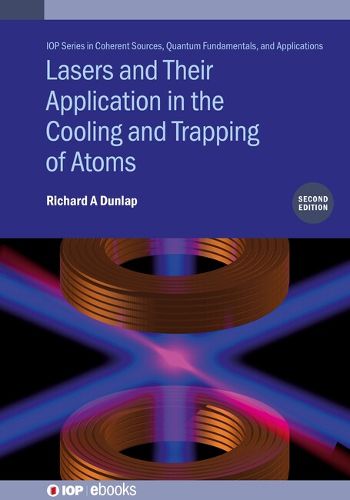Readings Newsletter
Become a Readings Member to make your shopping experience even easier.
Sign in or sign up for free!
You’re not far away from qualifying for FREE standard shipping within Australia
You’ve qualified for FREE standard shipping within Australia
The cart is loading…






This title is printed to order. This book may have been self-published. If so, we cannot guarantee the quality of the content. In the main most books will have gone through the editing process however some may not. We therefore suggest that you be aware of this before ordering this book. If in doubt check either the author or publisher’s details as we are unable to accept any returns unless they are faulty. Please contact us if you have any questions.
The first part of this text provides an overview of the physics of lasers and describes some of the more common types of lasers, including solid state lasers, gas lasers, excimer lasers, semiconducting lasers and free electron lasers and their applications. The production of laser light requires the formation of a resonant cavity where stimulated emission of radiation occurs. The light produced in this way is intense coherent and monochromatic. Applications of lasers include CD/DVD players, laser printers and fiber optic communication devices. While these devices depend largely on the monochromaticity and coherence of the light that lasers produce, other well known applications, such as laser machining and laser fusion depend on the intensity of laser light. The second part of the book describes the phenomenon of Bose-Einstein condensation. These condensates represent a state of matter that exists in some dilute gases at very low temperature as predicted first by Satyendra Nath Bose and Albert Einstein. Bose-Einstein condensates were first observed experimentally in 1995 by Eric Cornell and Carl Wieman at the University of Colorado, and shortly thereafter by Wolfgang Ketterle at the Massachusetts Institute of Technology. The experimental techniques used to create a Bose-Einstein condensate provide an interesting and unconventional application of lasers: the cooling and confinement of a dilute gas at very low temperature. The book reviews some traditional Bose Einstein condensate experiments, as well as some more unusual approaches to this topic including zero-gravity experiments and experiments on quasiparticle condensates.
Key Features:
Provides an overview of the basic principles of lasers for the non-specialist
Reviews the basic types of lasers and their operation
Summarizes the important applications of lasers
Covers the basic theory behind Bose-Einstein condensates in a way that is accessible to non-specialists
Describes the design of Bose-Einstein condensate experiments including the role of lasers for particle cooling and confinement
Summarizes historical and recent results of Bose-Einstein condensate experiments
$9.00 standard shipping within Australia
FREE standard shipping within Australia for orders over $100.00
Express & International shipping calculated at checkout
This title is printed to order. This book may have been self-published. If so, we cannot guarantee the quality of the content. In the main most books will have gone through the editing process however some may not. We therefore suggest that you be aware of this before ordering this book. If in doubt check either the author or publisher’s details as we are unable to accept any returns unless they are faulty. Please contact us if you have any questions.
The first part of this text provides an overview of the physics of lasers and describes some of the more common types of lasers, including solid state lasers, gas lasers, excimer lasers, semiconducting lasers and free electron lasers and their applications. The production of laser light requires the formation of a resonant cavity where stimulated emission of radiation occurs. The light produced in this way is intense coherent and monochromatic. Applications of lasers include CD/DVD players, laser printers and fiber optic communication devices. While these devices depend largely on the monochromaticity and coherence of the light that lasers produce, other well known applications, such as laser machining and laser fusion depend on the intensity of laser light. The second part of the book describes the phenomenon of Bose-Einstein condensation. These condensates represent a state of matter that exists in some dilute gases at very low temperature as predicted first by Satyendra Nath Bose and Albert Einstein. Bose-Einstein condensates were first observed experimentally in 1995 by Eric Cornell and Carl Wieman at the University of Colorado, and shortly thereafter by Wolfgang Ketterle at the Massachusetts Institute of Technology. The experimental techniques used to create a Bose-Einstein condensate provide an interesting and unconventional application of lasers: the cooling and confinement of a dilute gas at very low temperature. The book reviews some traditional Bose Einstein condensate experiments, as well as some more unusual approaches to this topic including zero-gravity experiments and experiments on quasiparticle condensates.
Key Features:
Provides an overview of the basic principles of lasers for the non-specialist
Reviews the basic types of lasers and their operation
Summarizes the important applications of lasers
Covers the basic theory behind Bose-Einstein condensates in a way that is accessible to non-specialists
Describes the design of Bose-Einstein condensate experiments including the role of lasers for particle cooling and confinement
Summarizes historical and recent results of Bose-Einstein condensate experiments